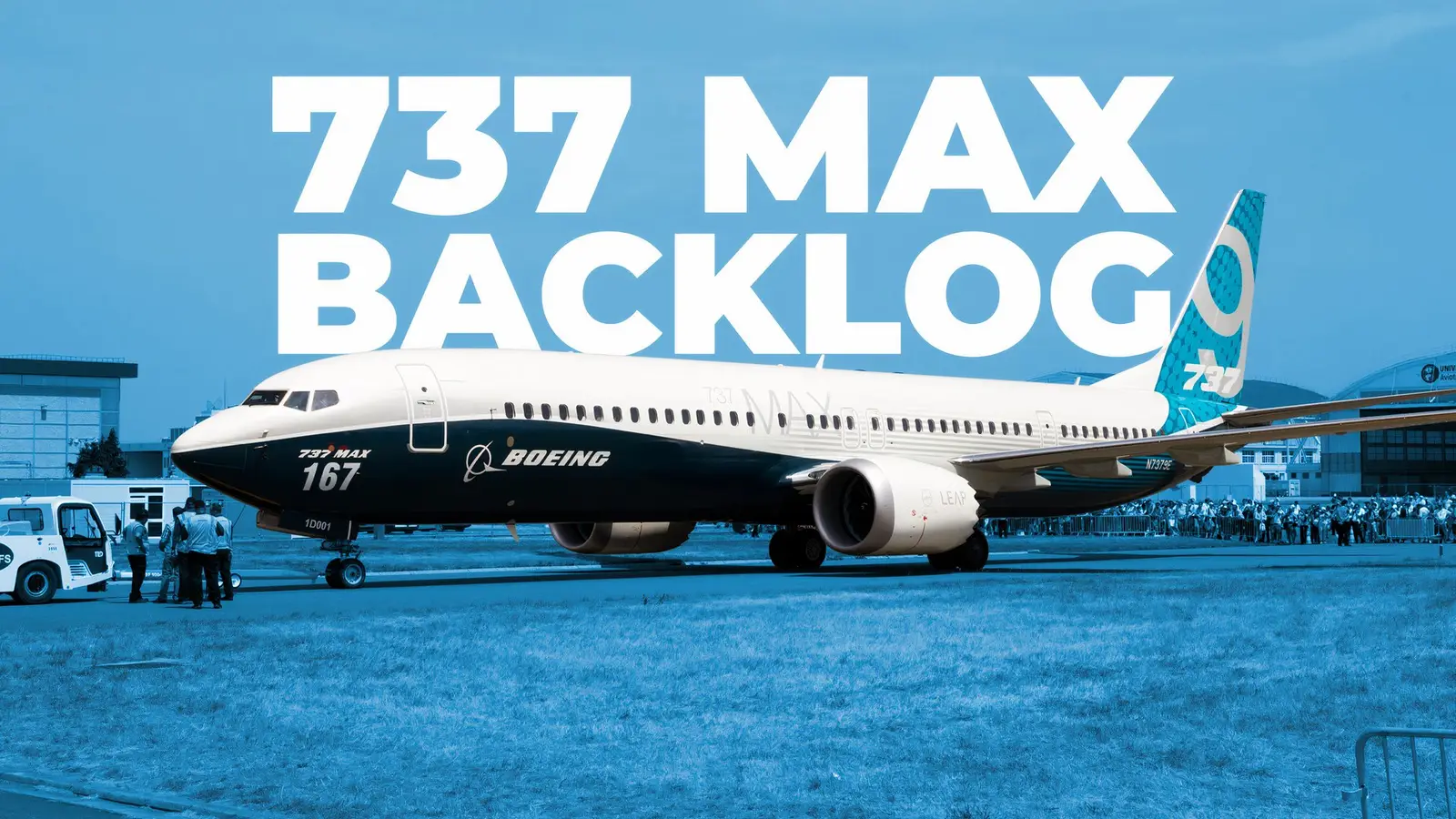
The Boeing 737 MAX is the latest generation of the second-most successful jet-powered airliner of all time: the Boeing 737. It competes with the Airbus A320neo, the second generation of the A320, the most successful jet-powered airliner of all time. However, while the 737 MAX is incredibly popular, sales are only 60% of what the A320neo has sold. The discrepancy can also be seen in deliveries, as Boeing has delivered less than half as many 737 MAX aircraft as A320neo aircraft.
In total, Airbus has delivered 4,098 A320neo family aircraft, while having received orders for over 11,000 examples. This represents 36% of the total orders. Boeing has delivered slightly under 2,000 737 MAX aircraft while it’s received over 6,700 orders, representing 28% of the ordered aircraft. Considering that the two types are meant to be direct competitors, why has Boeing delivered comparatively few aircraft, and why is there such a big sales discrepancy?
Overview Of The Boeing 737 MAX
The Boeing 737 MAX is the fourth generation of the 737. It’s a direct successor to the 737NG, but whereas prior refreshes of the 737 involved significant changes, the 737 MAX was a relatively mild overhaul. It includes new split “Advanced Technology” winglets, a revised tailcone, a revised cockpit, longer nose landing gear, and most prominently, the CFM LEAP-1B engine.
The 737NG family consisted of the 737-600, 737-700, 737-800, and 737-900/900ER. Boeing dropped the 737-600 while developing the 737 MAX 7, 737 MAX 8, and 737 MAX 9 to succeed the rest of the 737NG lineup. The 737 MAX 7 featured a revised fuselage length, while the 737 MAX 8 and 737 MAX 9 were simple refreshes of their equivalent 737NG variants. The 737 MAX 10, meanwhile, is a further stretch of the 737 MAX 9.
Sales of the 737 MAX are hardly evenly split across all variants. By far the most popular model is the 737 MAX 8, which has received over 4,700 orders. Next up is the 737 MAX 10, which has seen orders for over 1,200 examples, followed by the 737 MAX 9 and 737 MAX 7, both of which have sold fewer than 500 units each. In contrast, the A320neo and A321neo have both sold thousands of examples, while the A319neo has received only a handful of orders.
Impact Of The 737 MAX Groundings
On October 29, 2018, a Boeing 737 MAX 8 operating as Lion Air JT610 crashed into the Java Sea roughly 13 minutes after takeoff, killing all 189 people on board. Less than five months later, another Boeing 737 MAX 8 went down shortly after takeoff. The second aircraft, operating as Ethiopian Airlines ET302, was carrying 157 people onboard and went down in a chain of events concerningly similar to the JT610 crash. Together, 346 passengers lost their lives.
Shortly after the ET302 crash, governments around the world ordered the type to be grounded. Worldwide, 737 MAX aircraft were not permitted to carry passengers from March 2019 until November 2020, and Boeing could not deliver new examples. The manufacturer suspended 737 MAX production and would later produce the type at a reduced rate due to the lack of certainty over the groundings and order cancellations.
The COVID-19 pandemic saw turmoil across the aviation industry, but while there were several hundred cancellations for the type during the pandemic, Boeing also continued to receive new orders, all the while production continued at a reduced rate. Planes filled up parking lots, and some airlines ended up not taking their planes, resulting in “white-tails”. These aircraft would end up being sold to other airlines like United Airlines and Alaska Airlines.
The First Half Of The 2020s
The FAA ungrounded the 737 MAX in November 2020, and other regulators soon followed. From there, Boeing had to work on delivering preconstructed airliners to their new homes, far from a simple task. At the same time, production continued at a far lower rate than its 2019 targeted rate of 57 aircraft per month. Primarily, Boeing was focusing on clearing its inventory before committing to increasing production rates.
The 737 MAX continued to receive orders as Boeing cleared inventory, increasing the type’s backlog. Generally, a high backlog is good for a manufacturer, but it also typically comes with a rise in production rates so as not to significantly increase lead times. As it cleared inventory and sold off white tails, it began to gradually increase its production rates, signalling a return to stability for the troubled program.
Current A320neo production rates fluctuate, but Airbus targets 50 aircraft per month with an increase to 75 planned for 2027. Airbus has been particularly impacted by supply chain challenges and has occasionally fallen short of its intended output. Boeing, in contrast, delivered 38 737 MAX aircraft in December 2023, with plans to increase production rates in 2024. However, this would not go as planned.
Production Caps On The 737 MAX
On January 5, 2024, a Boeing 737 MAX 9 operating Alaska Airlines AS1282 experienced an explosive decompression when a door plug blew out during climb. The aircraft returned for a safe landing, and the subsequent investigation revealed that four bolts fastening the plug to the aircraft were not installed. The plane was just two months old at the time, and the plug was removed by Spirit Aerosystems employees before delivery. When the plug was reinstalled, it was not bolted into place.
The investigation exposed critical flaws in Boeing’s and Spirit Aerosystems’ (the contractor that assembles 737 fuselages) quality control processes. The 737 MAX 9 variant was grounded for 20 days, and Boeing ended up acquiring much of Spirit Aerosystems to bring more of 737 MAX production back in-house, which will allow for greater control and oversight.
Due to serious lapses in quality control in the production of the 737 MAX, the FAA imposed a limit barring Boeing from producing more than 38 737 MAX aircraft per month. Boeing reached this rate again in May 2025, and it is currently seeking approval from the FAA to increase production rates. However, that approval has not come yet, while orders continue to come in. As such, the backlog continues to increase.
Why Is The 737 MAX Lagging In Sales?
The 737 MAX is lagging behind the A320neo in deliveries due to numerous interruptions and reductions in the 737’s production. However, it’s also notable that the 737 MAX is significantly behind the A320neo in sales as well. The A320neo program has received over 11,000 orders since the type was launched in 2010, whereas the 737 MAX, having launched less than a year later, has received fewer than 7,000 orders.
At the lower end of the mainline narrowbody market, both companies have seen limited success. The A319neo has received just 57 orders, whereas Boeing has sold slightly over 300 737 MAX 7s, which is actually more than Airbus, although much of the orderbook is from Southwest Airlines. The 737 MAX 8, too, has outsold the A320neo, which has gradually become less relevant in Airbus’s lineup, while the 737 MAX 8 continues to shine.
What’s driving the A320neo program’s success is the A321neo. With over 7,000 orders, it is the single best-selling aircraft variant of all time, and Boeing has lacked a real answer. The 737 MAX 9 is smaller with worse per-seat operating costs, and just like the 737-900/737-900ER was dramatically outsold by the Airbus A321-200, the 737 MAX 9 flopped against the A321neo. The 737 MAX 10 promises to be a more competitive aircraft, but it still has not been certified after over five years of delays.
The Future Outlook Of The 737 MAX
The 737 MAX has been one of the most troubled aircraft programs in recent history, but Boeing has made changes to the aircraft and its processes to resolve the problems. It’s been unable to match the A320neo in sales or in deliveries, but the 737 MAX 8 continues to sell strongly while the 737 MAX 10 holds significant promise. Currently, Boeing is focusing on certifying the 737 MAX 7 and 737 MAX 10, with a rate increase requiring approval from the FAA.
The 737 MAX remains a formidable competitor to the A320neo series, and it follows up on one of the most iconic airliners of all time. The 737 MAX and A320neo are set to become the world’s definitive short-range airliners, and although the company has had trouble delivering the planes to their buyers, thousands more are sure to hit the skies in the near and distant future.



